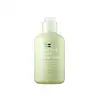What's inside
What's inside
 Key Ingredients
Key Ingredients

 Benefits
Benefits

 Concerns
Concerns

No concerns
 Ingredients Side-by-side
Ingredients Side-by-side

Sodium Bicarbonate
AbrasiveSodium Lauroyl Glutamate
Sodium Cocoyl Isethionate
CleansingZea Mays Starch
AbsorbentCamellia Sinensis Leaf Powder
ExfoliatingLysine Hcl
Skin ConditioningProline
Skin ConditioningSodium Ascorbyl Phosphate
AntioxidantAcetyl Methionine
Skin ConditioningTheanine
EmollientCarica Papaya Fruit Extract
Skin ConditioningSorbitol
HumectantPapain
Skin ConditioningBetaine
HumectantCellulose Gum
Emulsion StabilisingCitric Acid
BufferingSodium Hyaluronate
HumectantSodium Bicarbonate, Sodium Lauroyl Glutamate, Sodium Cocoyl Isethionate, Zea Mays Starch, Camellia Sinensis Leaf Powder, Lysine Hcl, Proline, Sodium Ascorbyl Phosphate, Acetyl Methionine, Theanine, Carica Papaya Fruit Extract, Sorbitol, Papain, Betaine, Cellulose Gum, Citric Acid, Sodium Hyaluronate
Zea Mays Starch
AbsorbentSodium Cocoyl Isethionate
CleansingSodium Lauroyl Glutamate
Diglycerin
HumectantAllantoin
Skin ConditioningMaltodextrin
AbsorbentPapain
Skin ConditioningCI 77004
Cosmetic ColorantSodium Bicarbonate
AbrasiveCitric Acid
BufferingSodium Polyacrylate
AbsorbentWater
Skin ConditioningOryza Sativa Powder
Oryza Sativa Lees Extract
Skin ConditioningOryza Sativa Bran Water
Masking1,2-Hexanediol
Skin ConditioningOryza Sativa Extract
AbsorbentButylene Glycol
HumectantDipropylene Glycol
HumectantHydrolyzed Rice Protein
Skin ConditioningOryza Sativa Seed Protein
AntioxidantCeramide NP
Skin ConditioningAscorbic Acid
AntioxidantAlpha-Arbutin
AntioxidantProtease
ExfoliatingCaprylyl Glycol
EmollientGlucose
HumectantGlycerin
HumectantTartaric Acid
BufferingLactic Acid
BufferingZea Mays Starch, Sodium Cocoyl Isethionate, Sodium Lauroyl Glutamate, Diglycerin, Allantoin, Maltodextrin, Papain, CI 77004, Sodium Bicarbonate, Citric Acid, Sodium Polyacrylate, Water, Oryza Sativa Powder, Oryza Sativa Lees Extract, Oryza Sativa Bran Water, 1,2-Hexanediol, Oryza Sativa Extract, Butylene Glycol, Dipropylene Glycol, Hydrolyzed Rice Protein, Oryza Sativa Seed Protein, Ceramide NP, Ascorbic Acid, Alpha-Arbutin, Protease, Caprylyl Glycol, Glucose, Glycerin, Tartaric Acid, Lactic Acid
 Reviews
Reviews

Alternatives
Ingredients Explained
These ingredients are found in both products.
Ingredients higher up in an ingredient list are typically present in a larger amount.
Citric Acid is an alpha hydroxy acid (AHA) naturally found in citrus fruits like oranges, lemons, and limes.
Like other AHAs, citric acid can exfoliate skin by breaking down the bonds that hold dead skin cells together. This helps reveal smoother and brighter skin underneath.
However, this exfoliating effect only happens at high concentrations (20%) which can be hard to find in cosmetic products.
Due to this, citric acid is usually included in small amounts as a pH adjuster. This helps keep products slightly more acidic and compatible with skin's natural pH.
In skincare formulas, citric acid can:
While it can provide some skin benefits, research shows lactic acid and glycolic acid are generally more effective and less irritating exfoliants.
Most citric acid used in skincare today is made by fermenting sugars (usually from molasses). This synthetic version is identical to the natural citrus form but easier to stabilize and use in formulations.
Read more about some other popular AHA's here:
Learn more about Citric AcidPapain is an enzyme found naturally in the papaya plant's leaves, fruit, and roots. It has antimicrobial, soothing, and wound healing properties.
Glycine and Vitamin A are naturally found in papain.
While papain is often touted as skin-lightening, further studies are needed to prove this. However, papain has been shown to help soothe acne-inflammation.
Papain belongs to a class of enzymes called proteolytic enzymes. These enzymes break down peptides and amino acids.
Some studies found papain to be a potential skin sensitizer and allergen. Those with latex allergies might also be allergic to papaya.
Learn more about PapainSodium Bicarbonate has a more famous name: Baking soda.
In cosmetics, it is used to adjust the acidity. Due to its white crystalline solid form, it can also be an abrasive (exfoliator).
This ingredient is water-soluble.
Learn more about Sodium BicarbonateSodium cocoyl isethionate is a natural ingredient from coconut oil. It is an ultra gentle cleanser that gives a nice foam without drying the skin or impacting the skin barrier.
The amount of foam created depends on the amount of sodium cocoyl isethionate used in the product.
This ingredient also helps improve the spreadability of a product.
Learn more about Sodium Cocoyl IsethionateSodium Lauroyl Glutamate is the sodium salt from the lauric acid of glutamic acid.
It is a surfactant and helps cleanse the skin. Surfactants gather oil, dirt, and other pollutants from your skin so they may be washed away easily.
Zea Mays Starch is starch made from corn. You might know this as cornstarch . It is used to thicken a product. It can replace talc as an absorbent.
The pH of cornstarch is 5.92.
Cornstarch is a common food ingredient used to thicken soups or to make corn syrup.
Learn more about Zea Mays Starch